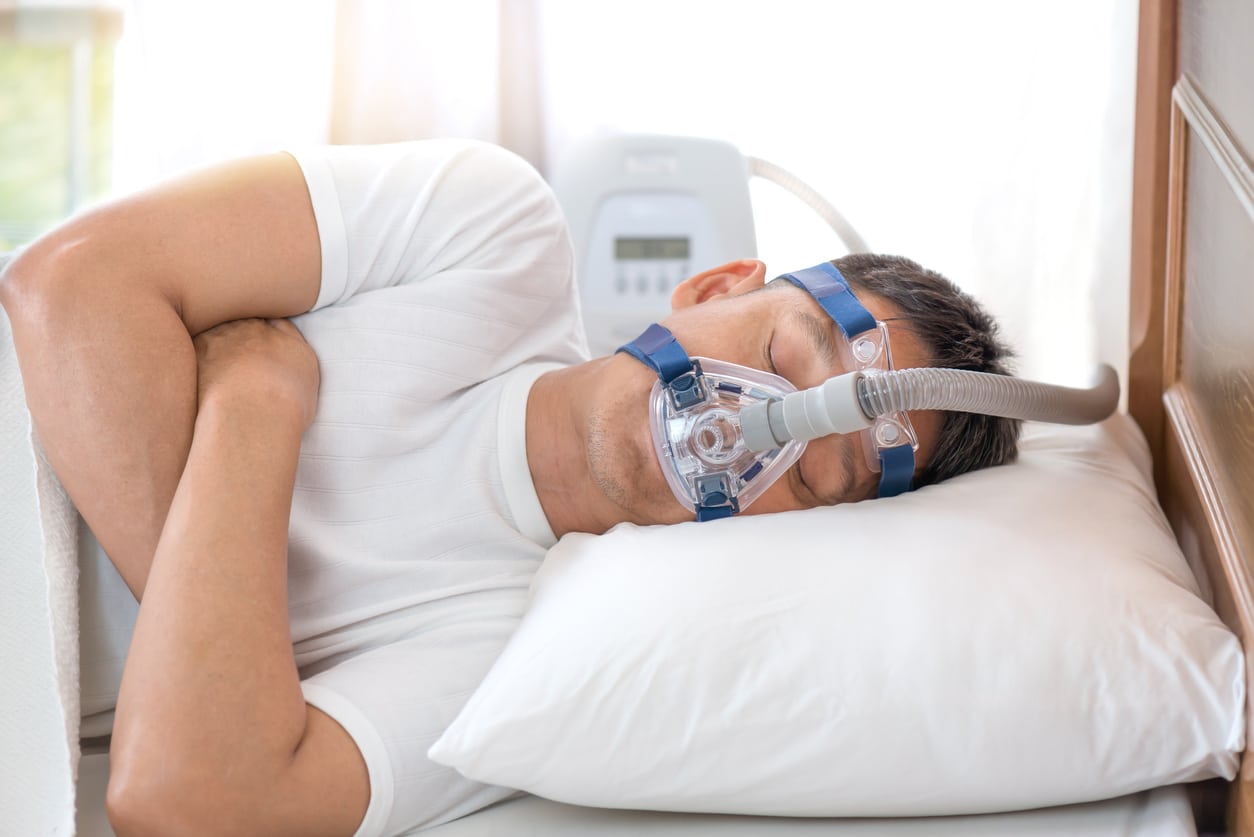How Does CPAP Work?
- Posted on: May 17 2022
 You have probably heard of a CPAP machine before. Maybe a friend or family uses one, or you use one yourself. What is this machine and how does it work?
You have probably heard of a CPAP machine before. Maybe a friend or family uses one, or you use one yourself. What is this machine and how does it work?
CPAP stands for Continuous Positive Airway Pressure. This is a treatment for obstructive sleep apnea (OSA): a disorder where a person experiences episodes of cessation of breathing at nighttime because their airway collapses.
A CPAP is a machine that is prescribed to you after a positive sleep study for obstructive sleep apnea (OSA). However, it is not the only form of therapy to treat OSA. CPAP works best for moderate and severe sleep apnea. CPAP is generally not well tolerated in mild OSA. If you have mild-moderate OSA, an oral appliance may be just as effective and better tolerated than CPAP. It is important for you to have an open nasal airway to tolerate either form of therapy.
CPAP works by keeping your airway open via positive air pressure that is pumped through your nose, mouth, or both. There are multiple types of face masks, nasal masks, and nasal pillows to choose from. The nasal pillow is a common choice for individuals who have an open nasal airway because it pumps pressure that pushes your tongue forward.
Most CPAPs are auto-titrated; this means they will automatically change the pressure of air you need to stop the OSA episodes. This pressure is at a constant setting for both the inspiration and expiration. Alternatively, BiPAP (bi-level positive airway pressure), is a machine that has a higher level of pressure during inspiration to keep the airway open and a lower level of pressure during expiration to make it more comfortable for the patient. BiPAP pressures are set during an in-lab sleep study. You do not need an in-lab study to obtain a CPAP machine.
Newer CPAP machines have the ability to share data about the effectiveness of the CPAP in treating your sleep apnea usually via phone app or online. You may meet with a health care provider occasionally to confirm it is effective in treating your sleep apnea.
What can be done to make CPAP more comfortable for you?
- Humidification to keep your airway moist and warm.
- Nasal pillows are soft and comfortable. This type of mask often allows you to sleep in various positions.
- Frequent replacement of supplies like masks, hosing, etc (based on your insurance company)
- Travel CPAPs: small CPAPs that can be used for those who travel frequently. They can be the size of a cell phone! These are not intended for daily use. Unfortunately, they are not usually covered by insurance.
- Focus on ways to keep your nose open and clear. Any nasal blockage will make your CPAP uncomfortable due to higher pressure requirements. Here at Sinus and Snoring Specialists, we focus on making sure your nasal airway is open which includes an evaluation and assessment by a provider.
If you need assistance managing your CPAP, or want to know other ways to manage your sleep apnea, request an appointment at Sinus and Snoring Specialists!
Tagged with: cpap, CPAP alternatives, obstructive sleep apnea, Sleep apnea
Posted in: CPAP

